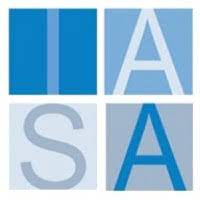Canvas overview: The Solution Design Canvas is helpful for architects for a number of reasons. First, it encourages teams to think critically about the problem they are trying to solve and the desired outcomes. This can help to ensure that the final solution is aligned with business goals. Second, the canvas provides a framework for developing and testing ideas. This can help to save time and money in the long run by identifying and eliminating flawed concepts early on. Finally, the canvas can be used to communicate complex ideas to stakeholders in a clear and concise way.
The Solution Design Canvas can be used in conjunction with design thinking and lean startup methodologies [1]. Design thinking is a human-centered approach to problem solving that emphasizes understanding the needs of users. Lean startup is a methodology for rapidly developing and testing new products or services. The Solution Design Canvas can help to integrate these two methodologies by providing a framework for thinking about the business problem, the target customer, and the desired outcomes.
How to use this canvas
Guide the team to reach a concise, shared problem statement. Write this prominently on the canvas.
Discuss the desired goals of the solution. Be specific and measurable.
Prioritize the top 2-3 outcomes and add them to the canvas.
Brainstorm potential solutions - encourage wild ideas, quantity over quality here.
Cluster similar solutions together.
Choose 1-2 promising solutions. Break them into key features or ‘user stories’ (how a user experiences the solution).
Discuss assumptions about the market, users, or solution. These are your hypotheses.
Identify key areas you need to research or validate (Need to Learn).
Explore potential competitors, challenges, or risks (Landscape & Landmines).
Decide which metrics will determine whether the solution is successful. Link them to the Business Outcomes.
Tips:
Timeboxing: Set a timer for each section to keep the meeting focused.
Diversity: Include team members with various perspectives (technical, business, user-focused)
Visuals: Use sticky notes and markers to capture ideas, making it easy to rearrange and group them.
Breaks: Schedule short breaks to keep energy levels high.
Documentation: Take photos of the completed canvas or transfer it digitally. This makes it easy to share and refine afterwards.
About IASA Global: IASA Global is a non-profit association for ALL Technology Architects which was established in 2002.The association is committed to improving the quality of the BT architecture industry by developing and delivering standards, education programs and developing accreditation programs and services that optimize the development of the architecture profession. The IASA network and membership consists of approximately 70,000 people in over 50 countries.
IASA Global has created the world's first and only Business Technology Architecture Body of Knowledge, (BTABoK), which is a free public archive of Business Technology architecture best practices, skills, and knowledge developed from the experience of individual and corporate members of IASA.
IASA has added templates for over 30 of the most frequently used BTABoK structured canvases into the Miroverse to help accelerate how Technology Architects collaborate on the architecture of the future. Give one a try today, and learn more about IASA at https://iasaglobal.org/.




